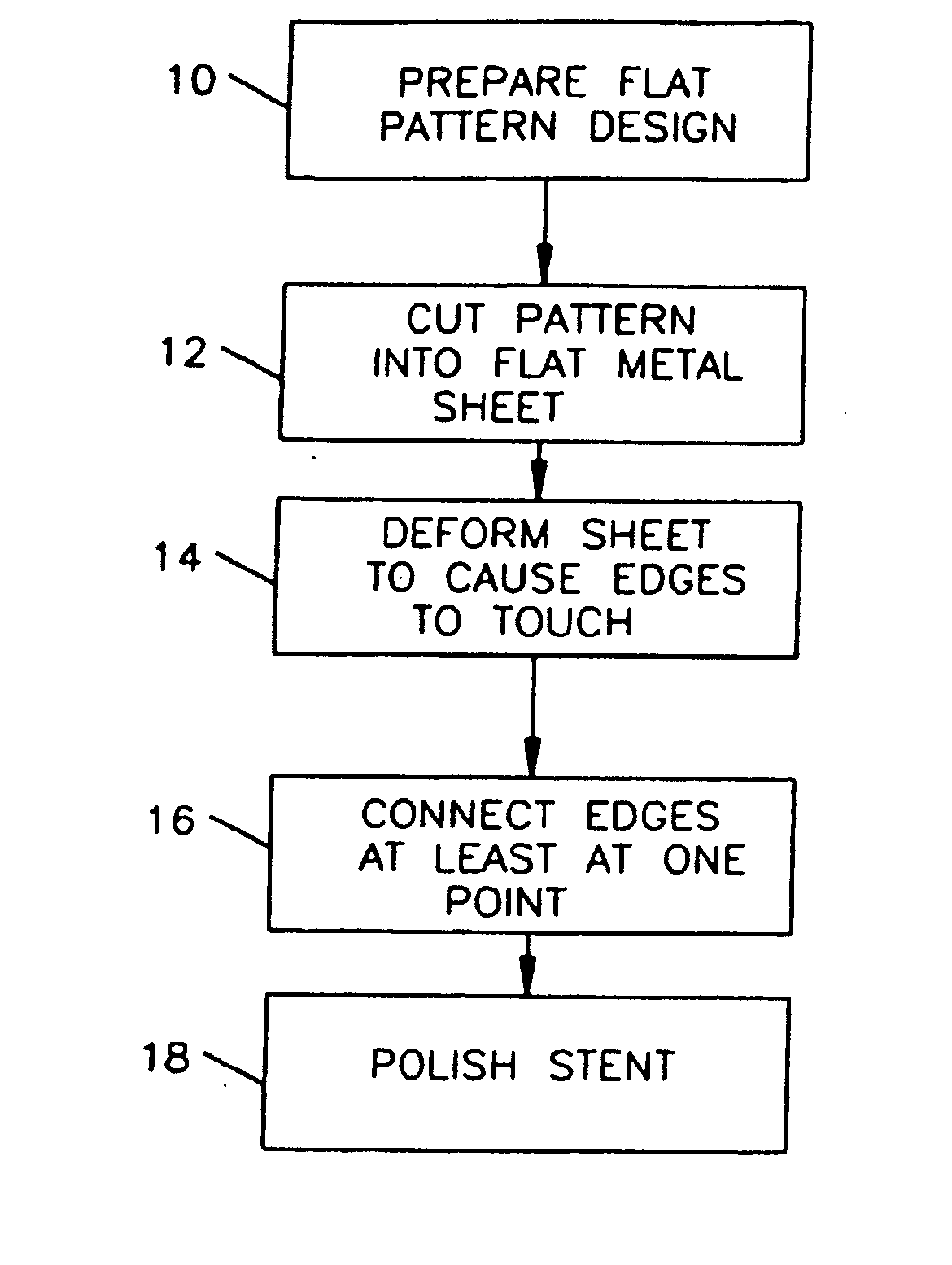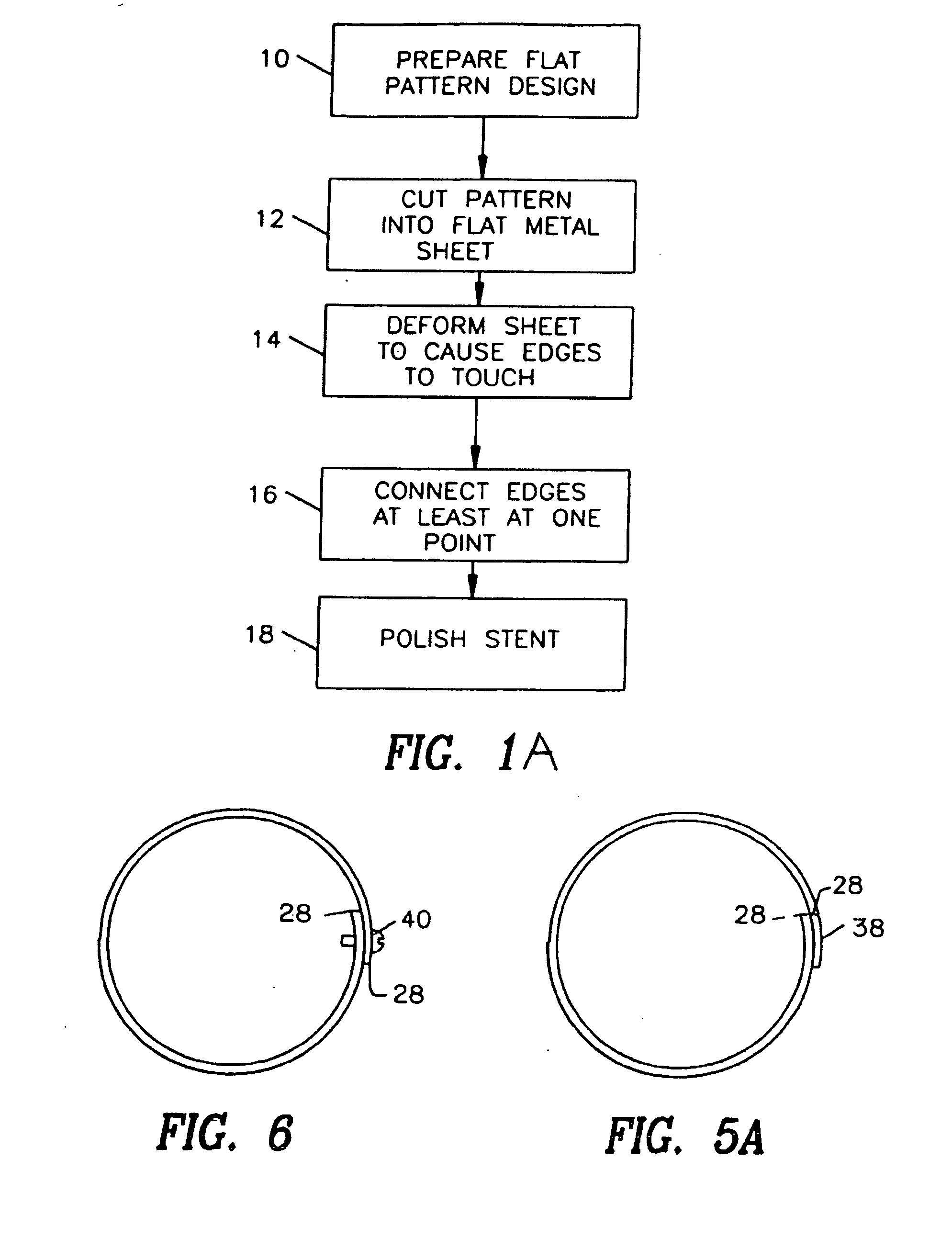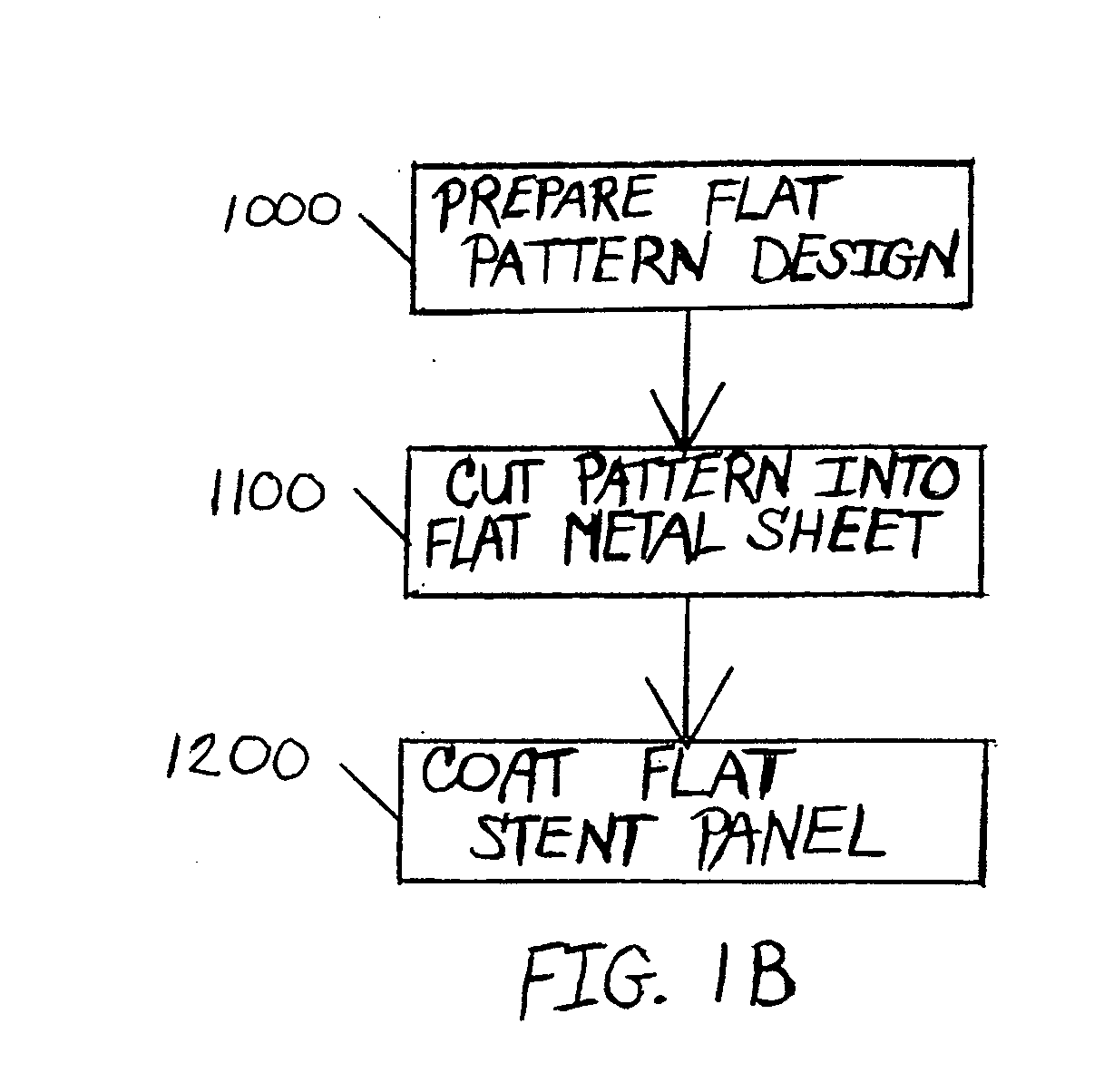Flat process of drug coating for stents
a technology of drug coating and stent, which is applied in the field of method of fabricating stents, can solve the problems of difficult to achieve uniformity of stent coating, large spot size of laser, and inability to achieve uniform stent coating, etc., and achieve the effect of eliminating the electropolishing step
- Summary
- Abstract
- Description
- Claims
- Application Information
AI Technical Summary
Benefits of technology
Problems solved by technology
Method used
Image
Examples
Embodiment Construction
[0154] Reference is now made to FIG. 1, which illustrates the stent fabrication method of the present invention and to FIGS. 2A, 2B, 2C, 3 and 4 which are useful in understanding the method of FIG. 1.
[0155] In the stent fabrication method of the present invention, a stent designer first prepares a drawing of the desired stent pattern in a flat format (step 10).
[0156]FIGS. 2A, 2B and 2C illustrate three exemplary stent pattern designs. The pattern of FIG. 2A has two types of sections 20 and 22. Each section 20 has two opposing periodic patterns and each section 22 has a plurality of connecting lines 24. The pattern of FIG. 2A can be formed of any size; a preferable size is to have each section 20 be between 1 and 6 mm wide and each section 22 have connecting lines 24 of 1-6 mm long. At such sizes, the pattern of FIG. 2A cannot be cut using a laser cutting system.
[0157] The pattern of FIG. 2B is similar to that of FIG. 2A in that it also has sections 20 of opposing periodic pattern...
PUM
| Property | Measurement | Unit |
|---|---|---|
| Time | aaaaa | aaaaa |
| Area | aaaaa | aaaaa |
| Therapeutic | aaaaa | aaaaa |
Abstract
Description
Claims
Application Information
 Login to View More
Login to View More - R&D
- Intellectual Property
- Life Sciences
- Materials
- Tech Scout
- Unparalleled Data Quality
- Higher Quality Content
- 60% Fewer Hallucinations
Browse by: Latest US Patents, China's latest patents, Technical Efficacy Thesaurus, Application Domain, Technology Topic, Popular Technical Reports.
© 2025 PatSnap. All rights reserved.Legal|Privacy policy|Modern Slavery Act Transparency Statement|Sitemap|About US| Contact US: help@patsnap.com



